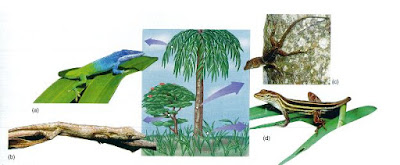explain the voluntary and automatic nervous system
the nervous system is divided into two main parts: the central nervous system which include the brain and spinal cord) and the peripheral nervous system (the blue boxes, which include the motor and sensory pathways). The motor pathways of the peripheral nervous system of a vertebrate can be further subdivided into the somatic (voluntary) nervous system, which relays commands to skeletal muscles, and the autonomic (involuntary) nervous system, which stimulates glands and relays commands to the smooth muscles of the body and to cardiac muscle. The voluntary nervous system can be controlled by conscious thought. You can, for ex-ample, command your hand to move. The autonomic nervous system, by contrast, cannot be controlled by conscious thought. You cannot, for example. tell the smooth muscles in your digestive tract to speed up their action. The central nervous system issues commands over both voluntary and autonomic systems, but you are conscious of only the voluntary commands.
 Voluntary Nervous System
Voluntary Nervous System
Motor neurons of the voluntary nervous system stimulate skeletal muscles to contract in two ways. First, motor neurons may stimulate the skeletal muscles of the body to contract in response to conscious commands. For example, if you want to bounce a basketball, your CNS sends messages through mo-tor neurons to the muscles in your arms and hands. However
The divisions of the vertebrate nervous system
The motor pathways of the peripheral nervous system are the somatic (voluntary) and autonomic nervous systems.skeletal muscle can also be stimulated as part of reflexes that do not require conscious control. Reflexes Enable Quick Action. The motor neurons of the body have been wired to enable the body to act particularly quickly in time of danger—even before the animal is consciously aware of the threat. These sudden. involuntary movements are called reflexes. A reflex produces a rapid motor response to a stimulus because the sensory neuron bringing information about the threat passes the information directly to a motor neuron. The escape reaction of a fly about to be swatted is a reflex. One of the moat frequently used reflexes in your body is blinking, a reflex that protects your eyes. If anything. such as an insect or a cloud of dust, approaches your eye. the eyelid blinks closed even belay you realize what has happened. The reflex occurs before the cerebrum is aware the eye is in danger.

Because they involve passing information between few neurons, reflexes are very fast. Many reflexes never reach the brain. The "danger" nerve impulse travels only as far as the The most famous involuntary response, the knee jerk, is produced by activating stretch receptors in the quadriceps muscle. When a rubber mallet taps the patellar tendon, the muscle and stretch receptors in the muscle are stretched. A signal travels up a sensory neuron to the spinal cord, where the sensory neuron stimulates a motor neuron, which sends a signal to the quadriceps muscle to contract.
spinal cord and then comes right back as a motor response. Most reflexes involve a single connecting inter neuron be-tween the sensory neuron and the motor neuron. A few, like the knee-jerk reflex in are mono synaptic reflex arcs. You see in the figure that the sensory neuron, a stretch receptor embedded in a muscle, "senses" the stretching of the muscle when the tendon is tapped. This stretching could harm the muscle and so a nerve impulse is sent to the spinal cord where it synapses directly with a motor neuron—there is no interferon intermediary between them. If you step on some-thing sharp, your leg jerks away from the danger: in the same way, the prick causes nerve impulses in sensory neurons, which pass to the spinal cord directly to motor neurons, which cause your leg muscles to contract, jerking your leg up.
Automatic nervous system
Some motor neurons are active all the time, even during sleep. These neurons carry messages from the CNS that keep the body going even when it is not active. These neurons are called the autonomic nervous system. The word autonomic means involuntary. The autonomic nervous system carries messages to muscles and glands that work without the animal noticing.

CNS uses to maintain the body's homeostasis. Using it, the CNS regulates heartbeat and controls muscle contractions in the walls of the blood vessels. It directs the muscles that control blood pressure, breathing, and the movement of food through the digestive system. It also carries messages that help stimulate glands to secrete tears, mucus, and digestive enzymes. The autonomic nervous system is composed of two elements that act in opposition to one another. One division, the sympathetic nervous system, dominates in times of stress. It controls the "fight-or-flight" reaction, increasing blood pressure, heart rate, breathing rate, and blood flow to the muscles. The sympathetic nervous system is colored pink and consists of a network of short motor axons extending out from the spinal cord to clusters of neuron cell bodies, called ganglia, indicated by the darker-colored band, located just to the right of the spinal cord in the figure. You can also see this chain of ganglia Long motor neurons extend from the ganglia directly to each target organ. Another division, the parasympathetic nervous system, has the opposite effect It conserves energy by slowing the heart-beat and breathing rate and by promoting digestion and elimination. The parasympathetic nervous system is colored in blue and consists of a network of long axons extending out from motor neurons within the spinal cord; these axons extend to ganglia in the im
mediate vicinity of an organ. It also consists of short motor neurons extending from the ganglia to the nearby organ. Most glands, smooth muscles, and cardiac muscles get constant input from both the sympathetic and parasympathetic systems. The CNS controls activity by varying the ratio of the two signals to either stimulate or inhibit the organ.
.

















